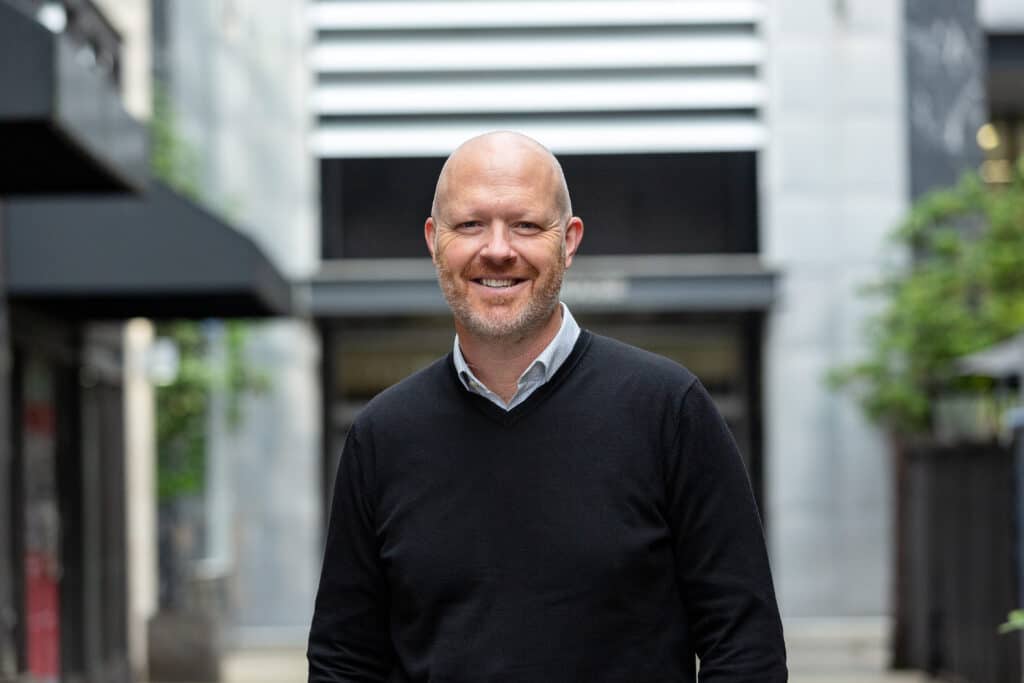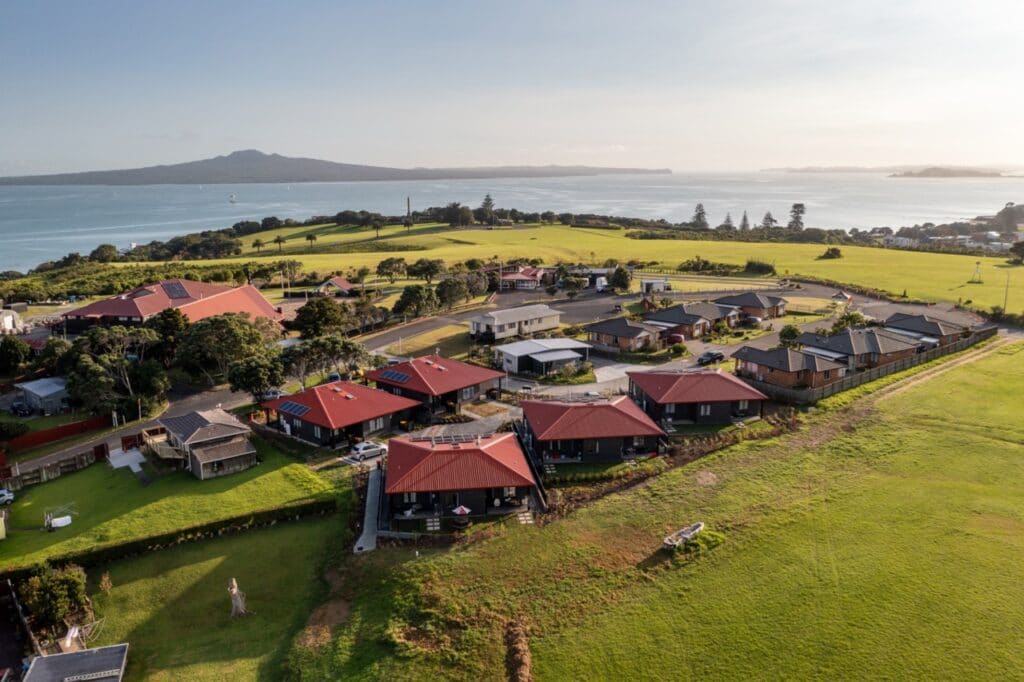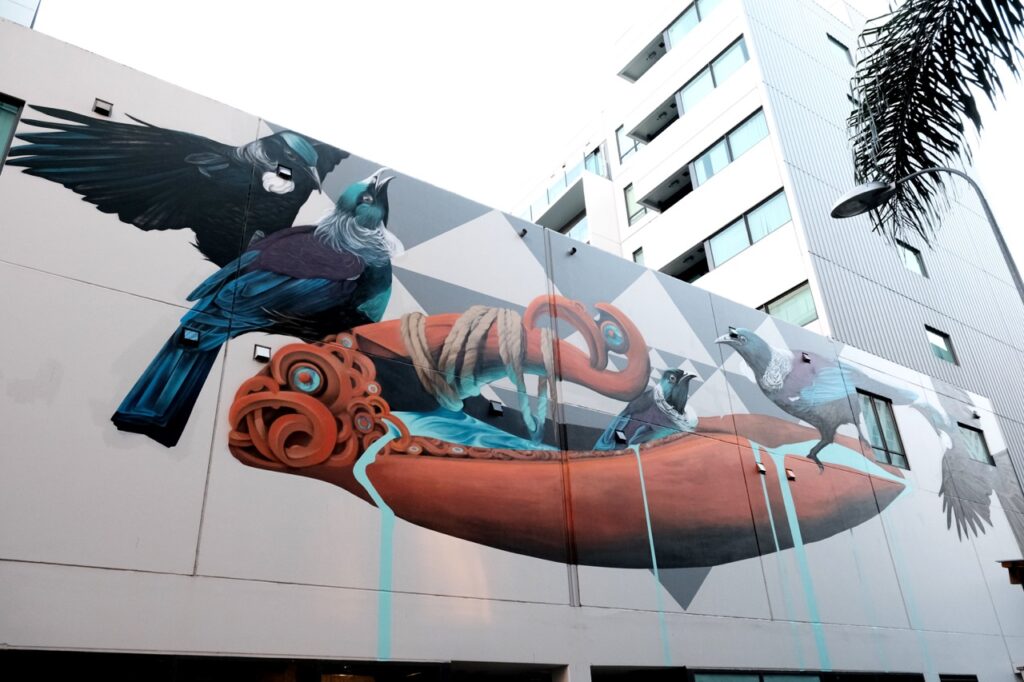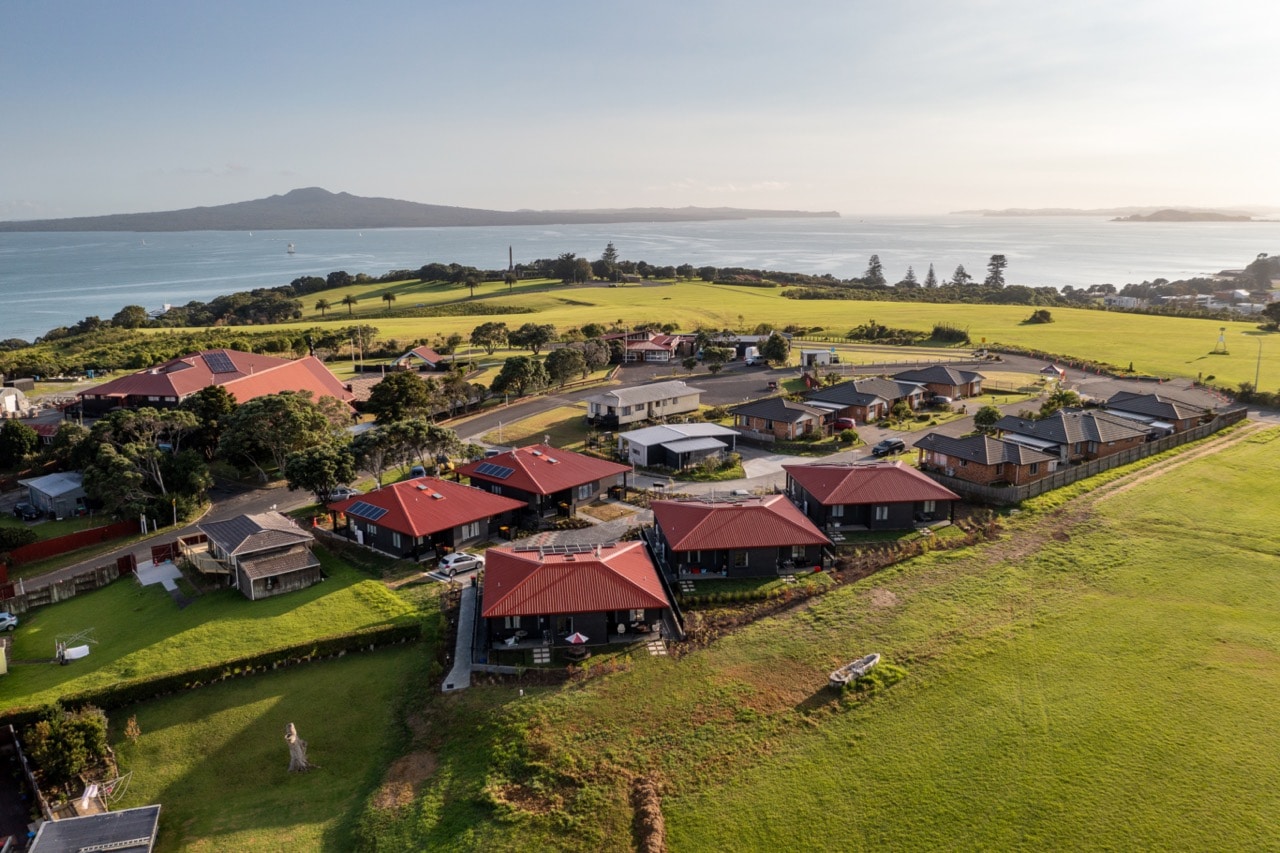
The path to property is rarely a straight line of ascension.
For Ngāti Whātua Ōrākei Whai Rawa Chief Executive, Grant Kemble, his journey has been more of a slow curve, gently guiding him to the right place, at the right time.
“I grew up in Tauranga, and came to Tāmaki Makaurau for university, leaving as a pimply-faced, mullet wearing grad with grand ideas of jumping into the corporate world”, says Kemble.
It was some robust marketing by law firm Russell McVeagh that saw Kemble change tact, summer clerking with the firm and being offered a role which allowed him to move up the ranks. From there he held several roles, including a stint in New York at Davis Polk & Wardwell, and a year as a Partner at MinterEllisonRuddWatts, before returning to Russell McVeagh for 17 years as Partner and eventually, Chairman of the Board.
In 2015, he was offered the role as chief executive of Perpetual Guardian, describing it as “jumping out into the real world”, then in 2018 he moved to Heartland Bank as Chief Risk Officer. Never intending to be a long term risk specialist, Grant stepped away from that role in 2021.
Entry into the property world and Te Ao Māori
Grant joined Whai Rawa as Acting Chief Executive when it was reeling from the tragic passing of former CEO Andrew Crocker in May 2021.
“I arrived here in unfortunate circumstances, so my introduction to Te Ao Māori (the Māori world) and my arrival in the property world was unintentional.”
“I was very lucky to have previously worked while I was at Russell McVeagh with John Dakin, Andy and Anton (at Goodman) and Scott Pritchard and George (at Precinct Properties), which were both fantastic teams that I loved working with. I always thought that property was somewhere I’d love to be.”
“I have a real enthusiasm for Te Ao Māori and have always admired the Māori view on life but had only ever worked on one small Treaty of Waitangi claim. I consider myself fortunate to have this kind of opportunity.”
“Once here, I quickly learned that it was a much broader, deeper role than I had initially thought. Although not originally the plan, it was an easy decision to throw my hat in the ring for the permanent job.”

Te pai me te whai rawa
Seeking prosperity for whānau
“With property, you have an opportunity to make a difference. Whether it’s focussing on the people angle and affordable housing, or you’re focussing on the sustainability angle and the challenges we face as an industry. You have a real ability to make a positive difference and to be able to walk away feeling pretty good about what you’re achieving.”
“The beauty of this place (Ngāti Whātua Ōrākei Whai Rawa) for me is that it is both a great commercial role, and a role with heart. You have the balance of a portfolio worth $1.5 bn that encompasses residential development, ground leases, commercial office space, and meanwhile the iwi economy and Te Ao Māori are taking off, presenting both opportunity and challenges.”

“I am lucky to have a great team, who I can rely on for their technical knowledge and a great Board, with three hapū representatives; Tanya Povey, Ngarimu Blair, and Tom Irvine, with Chair Michael Stiassny and Independent Directors Chris Gudgeon and Jim Quinn.”
“The role uniquely combines commercial with community. You get to make money, but you also get to see that money make a difference.”
“We have over 6,000 whānau in the hapū, for whom Ngāti Whātua Ōrākei cover health insurance premiums. Ngāti Whātua Ōrākei provide whānau housing, education grants, provided SME support during COVID, and at one point were delivering more than 1,000 meals per week during lockdowns called ‘Kai on the Fly’. Ngāti Whātua Ōrākei also opened and managed a vaccination and testing centre last year. The money Whai Rawa makes is used well and provides direct support to whānau. The Chief Executive role is a great corporate opportunity coupled with a great purpose.”
Ka tū pari tokatoka, ka horo pari oneone
A pa built from stone will stand strong, that made of earth will crumble
In January, the iwi opened Kāinga Kaumātua, providing purpose-built whare for kaumātua at its Ōrākei papakāinga at Takaparawhau (Bastion Point). For some of the kaumātua, the provision of a new home in Ōrākei is a full-circle moment, having seen the Crown’s eviction of occupants of their central Auckland Ōkahu Bay settlement in 1952.
It is one of New Zealand’s more recent injustices, but one that is often unheard of. In 1952, the Crown took possession of the last remaining papakāinga homes built on ancestral land, forcing the community off the highly valuable site. The settlement was set alight prior to a visit by Queen Elizabeth II because it was deemed an eyesore.
To put this in perspective, between 1840 and 1842, Ngāti Whātua Ōrākei gifted over 32,000 acres of central Auckland land to the Crown in order to settle Auckland. A promise was made that Māori would gain some benefit from on-sales, with 15 to 20 percent of land sale proceeds to be placed in an endowment fund to promote the “health, civilisation, education and spiritual care of the natives”.
During the 1840’s, the Crown on-sold much of the 32,000 acres at a massive profit, with little to no benefit passed on to iwi. By 1855, the only lands that Ngāti Whātua Ōrākei retained were 700 acres at Ōrākei, having been alienated from over 136,000 acres in the 15 years prior. During its 2011 Treaty settlement, the Crown acknowledged that it had breached the Treaty of Waitangi, failed to protect lands and failed to provide adequate endowments for the future use or benefit of Ngāti Whātua Ōrākei.
Note: Read the full agreement in Principle between the Crown and Ngāti Whātua Ōrākei here.

“Ngāti Whātua Ōrākei received $18m in financial redress and the opportunity to purchase surplus land owned by the New Zealand Defence Force in the North Shore in that settlement. The reality is that this represented a fraction of what Ngāti Whātua Ōrākei lost.”
“Being part of a drive to help the iwi to continue to rebuild is a strong catalyst for both the Board and myself.”
“Andrew Crocker was one of the driving forces behind Kāinga Kaumātua coming to fruition, part of the legacy he leaves behind.”
“It was a special project for me to be part of, watching some of the kaumātua, who were children when the original pā in Ōkahu Bay was destroyed, reconnect with their papakāinga. I found it a very strong confirmation of what we’re here to do, and I’m proud to say that we plan to provide more homes for the hapū over the coming years.”
Looking ahead
“The obvious obstacle at the moment is uncertainty. Uncertainty around COVID, the return to the office and people feeling safe and comfortable, and the consequential economic uncertainty that we have in front of us.”
“In the residential development sector, supply cost pressures, housing market uncertainty and rising interest rates are all cause for concern. We believe we have a strong development brand, we build a good product and we have great locations, and people know we’ll still be around if the tide goes out, which is an opportunity for us. But this uncertainty still affects our market.”
“In the commercial office sector, Te Tōangaroa is our single largest commercial asset, but there is a lot of office space around at the moment and we’re seeing our hospitality and retail tenants suffer. The CBD needs a nudge, and we are committed to revitalising both this precinct and further supporting the CBD.”

“Long-term, people will always need property. We need to be nimble, we need to be proactive in how we work with tenants. There’s a real push around affordability and sustainability and if anything, those calls are going to get greater over the medium to longer term.”
“If we’re thinking broadly about challenges, you’d have to worry about the cost of living in New Zealand, and that goes for our hapū and for Aotearoa in general. There are many studies that show the positive impact of good housing. It sets you up for everything, in terms of your health, your education. This should be an overriding concern for all New Zealanders.”
“There are increasing amounts of funding available for housing but ensuring that the pathways for that funding and the delivery of that housing are as good as possible should be a real policy-driver for anyone in Wellington.”
“Whai Rawa has some core commercial drivers. We have a focus on Te Tōangaroa and the reactivation of that precinct. We also have a focus on land in the North Shore aptly named Oneoneroa and near the Unitec campus in Owairaka Mt Albert, with delivery of several projects on these sites over the coming years. On the non-commercial side, the Ngāti Whātua Ōrākei Trust has a very clear driver around providing more whānau housing.”
“We are actively seeking good partners that share our values and want to create and achieve things. We have capital, we’re values-driven and we want to align ourselves with the right partners for the long-term.”
Karawhiua! Make it happen!
Grant’s one message for the property sector is simple; let’s deliver affordable housing.
“Let’s be real about that. Let’s recognise the degree of inequality there is and let’s do something about it. We have people suffering unnecessarily and it’s not good enough.”
“There are a lot of organisations driving great change in this space, but the more people who support that drive, the better.”
“If we’re really serious about fixing these issues, we need to do more than just review things, we have to have the courage to make a change.”
Learn more about Ngāti Whātua Ōrākei Whai Rawa here.
About the City Shapers Series
The City Shapers Series is a collection of interviews with some of Property Council’s most prominent members. The series is about showcasing the people in property – the city shapers who lead extraordinary teams, develop exemplary projects and demonstrate the very best of the New Zealand property industry.
We aim to highlight the property industry’s role as an important contributor to New Zealand’s economy and our members as ‘city shapers’, building communities for Kiwis to live, work, play and shop.
Author: Kelly Taylor

